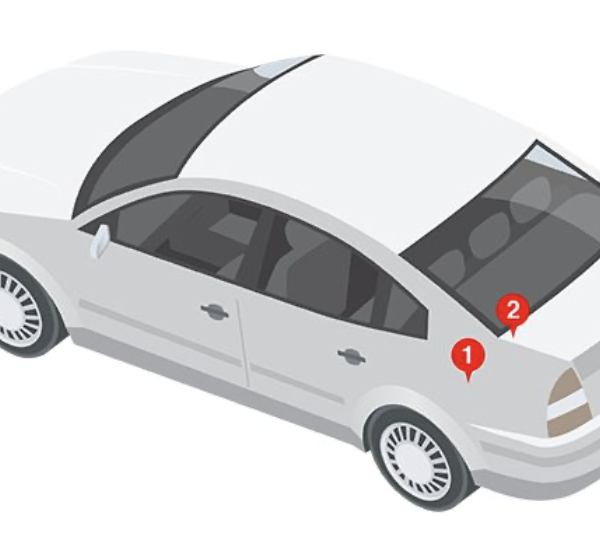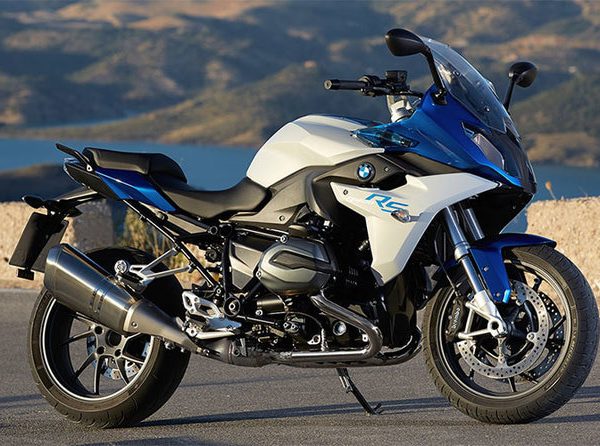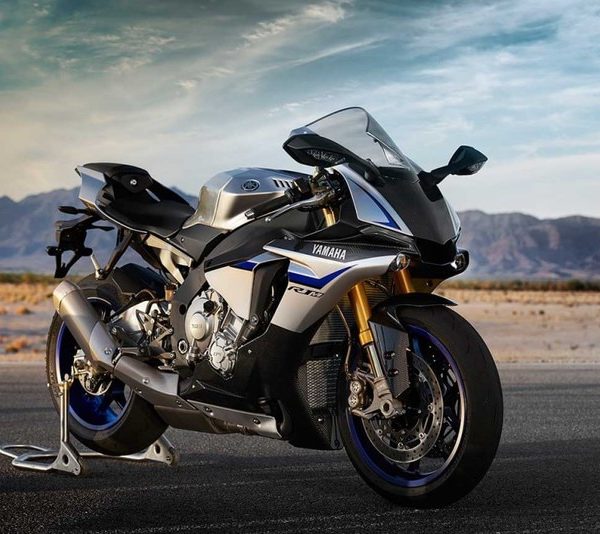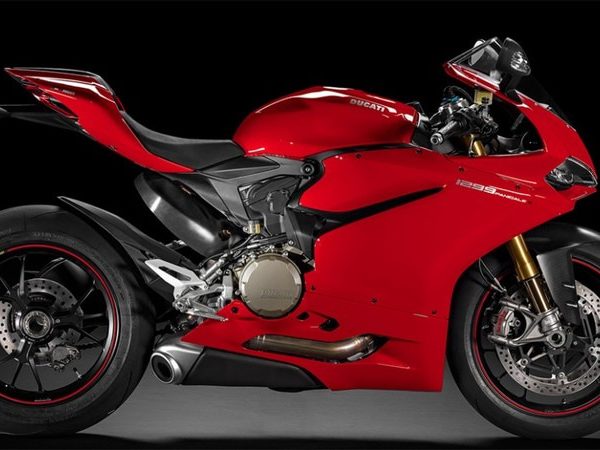5 Tales of Infamous Cars
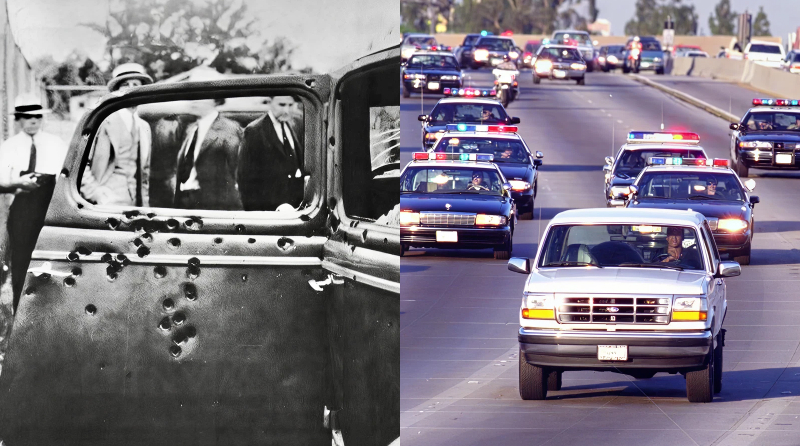
Today we’re going to be telling the lamentable tales of infamous cars throughout history. What makes a car infamous? Perhaps they had the misfortune of being in the wrong place at the wrong time. Maybe they were driven by notorious men and women who imbued them with an aura and reputation that can never be removed. Or sometimes they’re built so wrong that the entire line becomes an object of infamy. Here are 5 cars that became famous for the wrong reasons.
The Presidential 1961 Ford Lincoln Continental
This Ford convertible is the site of one of the most devastating moments in American history: the assassination of John F. Kennedy. Thanks to the Zapruder Film, images of what happened in this Lincoln Continental are seared into the minds of the public consciousness. This midnight blue Lincoln was built by Ford in January 1961 and leased out to the Secret Service just a few months later. Codenamed X-100, the car underwent many modifications at car customizer Hess & Eisenhardt to make it a safe vehicle for the President. The modifications allegedly cost nearly $200,000. Some of these mods included grab handles and steps for Secret Service agents and three removable roofs: a cloth roof, a metal roof, and a plastic bubble. None of these were installed that day in Texas obviously, but the Warren commission later stated that bubbletop would not have provided protection if it had been applied. It was, like the rest of the car, unarmored.
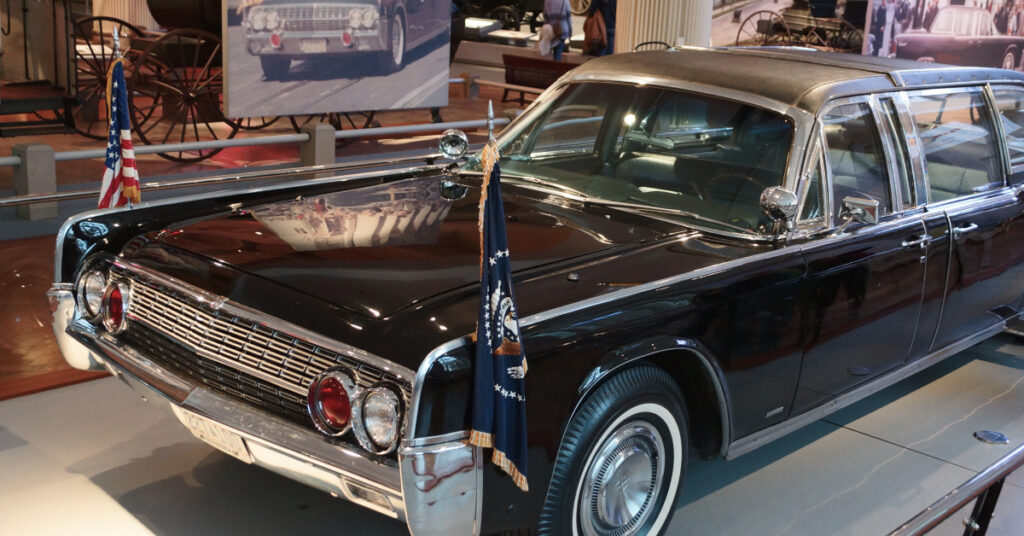
After the assassination, the Lincoln Continental was impounded and eventually returned to DC, where a committee decided what was to be done with it. This committee included representatives from the Secret Service, Hess & Eisenhardt, the Army Materials Research Center, and the Pittsburgh Glass Company. These representatives had a difficult decision to make. What do you do with something with such historical and tragic weight? Should they destroy it? Give it to a museum? Or say…slap a roof on, deep clean the interior, armor the car, give it a fresh coat of paint and put it back in the presidential motor pool? The Lincoln Continental was put back into rotation about six months after the assassination, chauffeuring President Lyndon B. Johnson and President Diosdad Macapagal of the Philippines down the streets of Washington D.C.. President Johnson was reportedly not thrilled at the prospect of being put in this car, but fixing it up was deemed the more cost-saving option. Before its retirement to the Henry Ford Museum in 1977, the Lincoln Continental would carry 3 more presidents. Richard Nixon requested a curious feature for the car during his presidency: a glass roof with a hinge so he could pop out and wave to the crowd.
Al Cowling’s White Bronco
Before becoming the center of the Trial of the Century, OJ Simpson was a beloved fixture in American pop culture. From his rise in college football at USC to his legendary time in the NFL, Simpson had become an affable and well loved star. So it was an intense shock when it was announced that he had been charged with the horrific murders of his ex-wife Nicole Brown Simpson and her friend Ron Goldman. The surprises kept coming when Simpson did not turn himself in to the police, but instead bolted with his friend Al Cowling in Cowling’s Oxford White Ford Bronco. The ensuing low-speed chase (with police being careful due to Simpson’s fragile mental health) involved 21 police cars and a plethora of media helicopters broadcasting the whole thing to a transfixed audience back home. It’s estimated that 95 million people watched the Bronco chase and Simpson’s eventual surrender.
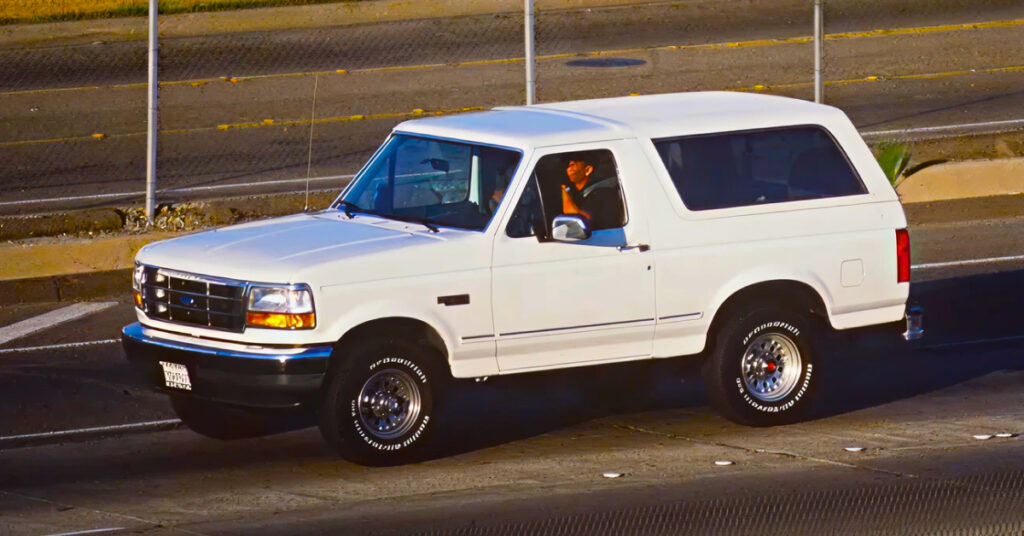
After impounding the most famous car in America, the police returned the car to Al Cowlings. Right before the trial, he received an offer of $75,000 for the car from a memorabilia company based out of Minnesota. Cowling agreed but backed out when he realized the company’s morbid intention was to use the car to give L.A. graveyard tours that would re-enact the chase before ending up at Nicole Brown Simpson’s grave. Simpson’s former agent and two of Cowling’s friends stepped in and took ownership of the car for $75,000. The new owner entertained a few offers for the Bronco but no one offered above $275,000. It sat in the garage of one of the owners’ condo complex until 2012, when a representative from the Luxor Casino found it and offered the owners a spot in front of the casino. The car spent a few months in front of the Luxor before the loan fell apart. The casino wanted to take the Bronco apart and bring it inside. Even during all those years in the garage, the owners had maintained it well enough to run and would not let the casino dismantle the vehicle. The Bronco now resides in the Alcatraz East Crime Museum in Pigeon Forge, Tennessee on a loan. Still running and still for sale.
The Ford Pinto
The legend of The Ford Pinto looms large in the annals of automotive history. The myth surrounding the car includes a great deal of misinformation, the reality is still a legacy of trauma and death. So how did this car end up with a reputation as a death trap? In the 60’s, the popularity of subcompact cars began to rise. Seeing the success of Asian and European imports in the US, Ford President Lee Iacocca pushed hard for the company to build a subcompact car of their own. Once authorized, the Pinto became Iococca’s pet project. It had to be brought in at a certain weight, cost and on time to be rolled out for the 1971 season. The average development and production time for cars in this period was about 43 months. This rush project was completed in 25 months. Mixing and matching components from Ford’s European companies cut down on the time. They also saved time by running development and machine tooling at the same time, meaning that any changes to the design would be both difficult and costly. This combined with the inflexibility of the mandate meant that when the crash tests revealed a problem, they did not implement a fix for it. The problem? Sometimes when it was rear ended, the Pinto burst into flame.
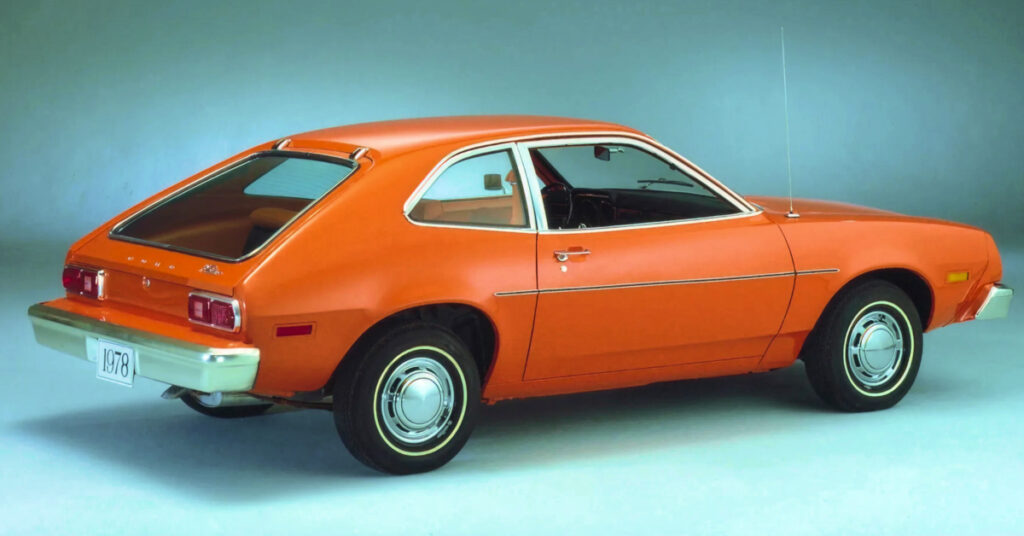
The Pinto’s rear structure was badly designed, making the fuel tank vulnerable in a collision. The location of the fuel tank behind the rear axle meant that it could be punctured by bolts when the car was rear ended. There was also a chance that the fuel filler neck would be ripped out of the tank. A number of conditions in a collision would likely set that fuel ablaze. And that’s exactly what happened. Over the next 10 years, 27 people died and more suffered injuries and burns when their Pintos were rear ended. Ford faced 117 lawsuits and a reckless homicide charge over the death of 3 teenagers in Indiana. Faced with a growing furor from the public and a possible government enforced recall, Ford finally issued a recall of 1.5 million vehicles in 1978. But the damage was done. While very popular in its initial release, the public relations disaster cut sales by 50% and Ford quietly retired “Lee’s car” in 1980.
Al Capone’s Killer Cars
Over the course of 7 years, Al Capone dominated Chicago’s criminal underworld. Prohibition allowed his Chicago Outfit to flourish beyond anyone’s wildest imagination. Seen as a modern day Robin Hood for his contributions to charity, Capone and the Chicago Outfit’s wars with both the South Street Gang and Joe Aiello filled the city with violence. Even though the streets were awash with gunfights & bombings, Capone had the Mayor and police in his pocket to keep him out of trouble. Capone led a luxurious lifestyle that included a fleet of cars, some which were heavily modified to support his life of crime. A 1933 video from British Pathe shows one of these cars being shown off in Essex. This 1928 Cadillac Model 341A Town Sedan came with a police siren to fool people and a police pick up radio so they could see what the cops knew. It was covered in bulletproof glass so heavy that the car weighed 140 pounds. Capone lived large and lavishly and that’s what got him in the end.
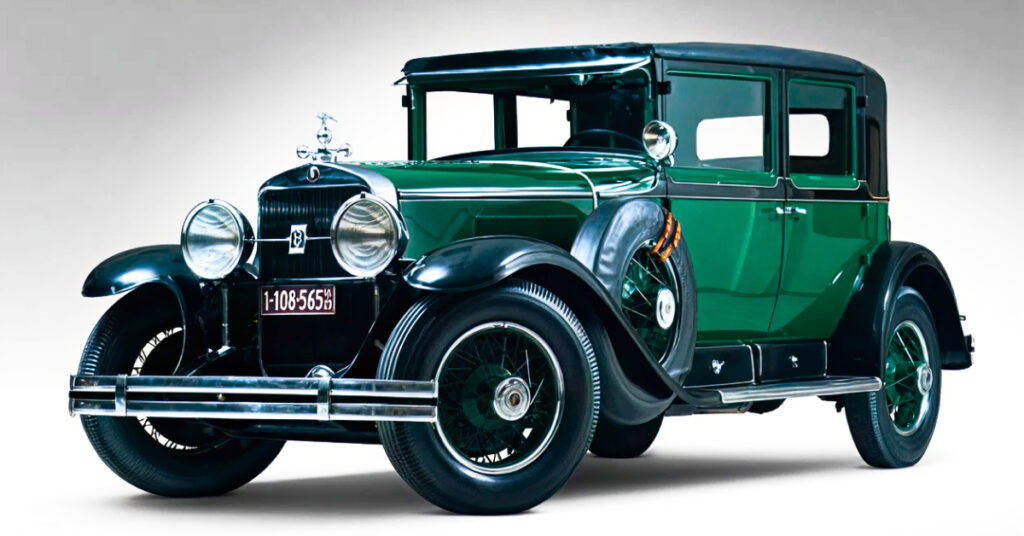
Famously, it was tax evasion that trapped him. The U.S. Supreme Court had ruled that you still had to pay income tax on money that you made illegally in United States v. Sullivan, clearing the way to arrest Capone and other gangsters. In 1931, Al Capone was sentenced to 11 years in prison but was released to a hospital after 6 years. Jailors realized that his syphilis had severely damaged his brain to the point where he had the mentality of a 12 year old child. He died at his home in Florida in 1947. Over the years, many of Capone’s cars have found their way to museums and casinos, a subject of fascination.
Bonnie & Clyde’s Death Car
Barely out of their teens, Bonnie Parker and Clyde Barrow became a subject of great public fascination in Great Depression era America. The Barrow gang robbed everything from rural gas stations to banks. They could be ruthless (12 murders, 9 of them law enforcement). They could be merciful (sometimes releasing hostages with enough money to get home). They lived fast and they died very young. Bonnie & Clyde’s brutal deaths at the hands of a police ambush at the ages of 23 and 25, respectively, put an end to their crime spree but not their legend. The last car they ever stole was swept up into legend as well.

Clyde Barrow loved a Ford car. He even allegedly sent a fan letter to Henry Ford in 1934, extolling the virtues of the V-8. Bonnie & Clyde were killed in a V-8 stolen from Ruth Warren of Topeka, Kansas. A member of the posse claimed the bullet ridden car as a trophy, but Warren sued him and got ownership back. Badly damaged by the posse’s bullets and still covered in blood and viscera, Ruth Warren was forced to drive the car to Shreveport in its broken and grisly state. For decades after, it became a popular traveling attraction that you could even sit in for a fee. It was sold to a casino in Vegas for about $250,000 and it now resides at Buffalo Bill’s Resort & Casino in Primm, Nevada. Thanks to the 1967 film Bonnie and Clyde, there’s been a bit of confusion about where the real car is located and which are movie cars. Popular consensus seems to agree that you can see the car and gamble at Buffalo Bill’s.

 Cart
Cart
 Help Desk
Help Desk



